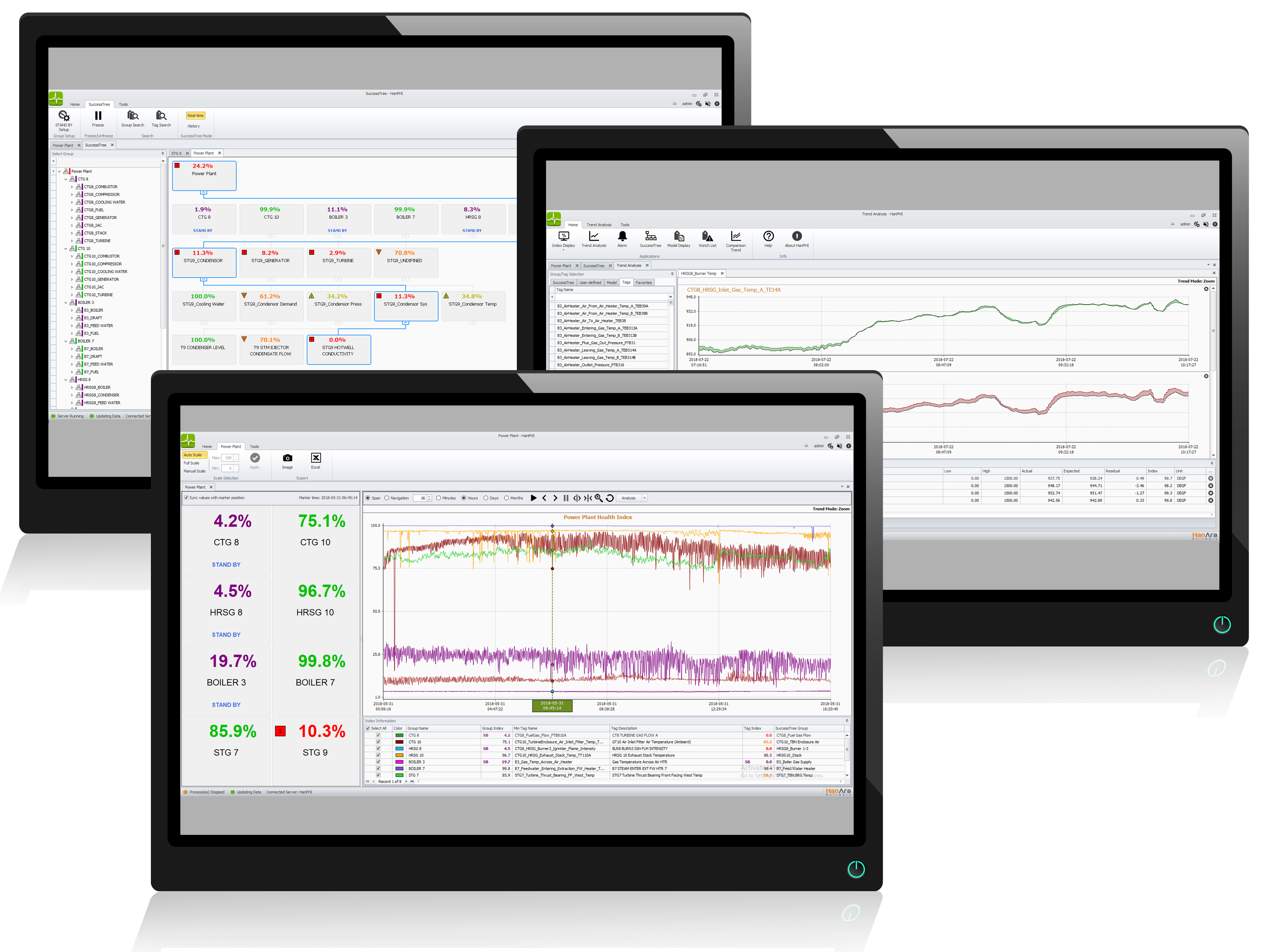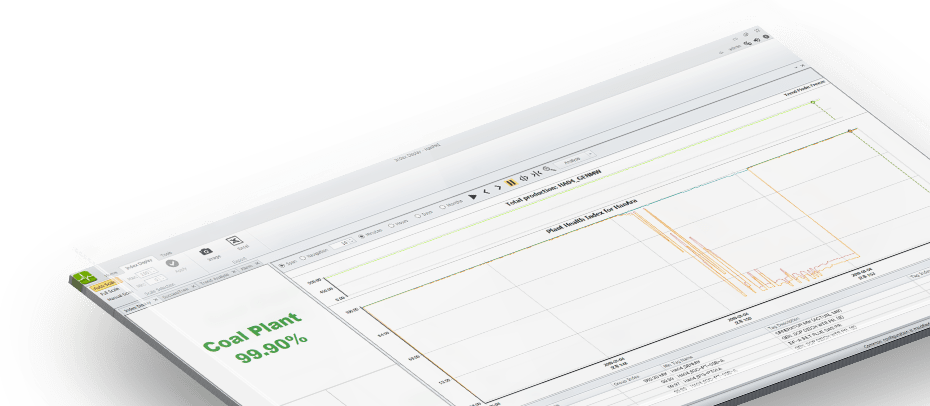HanPHI: A Simple and Effective Predictive Maintenance Tool
HanPHI, our plant health index, allows you to monitor the condition of all your equipment quickly, identifying anomalies across assets and providing early warnings of impending equipment failures days, weeks, or months in advance. This intelligent software learns, models, and analyzes data to provide actionable early warnings to plant operators, engineers, and managers before a catastrophic failure occurs. To provide meaningful intelligence, HanPHI uses unsupervised machine learning, advanced pattern recognition, and historical data.
BY THE NUMBERS

WHAT WE MONITOR
SIMPLIFIED MANAGEMENT
The beauty of HanPHI is that it reflects your operations in your environment. To ensure HanPHI continues to provide meaningful insights, HanPHI includes built-in tools for simplified management and maintenance. These tools help ensure maintainability, reliability and availability. Some ways HanPHI helps include:
- Automated Grouping: tag correlation tool to identify related tags and sensors automatically
- Mass Customizations: update settings in mass including the health index, sensitivity factor, and design
- User Settings: designate user access and options based on user and organizational needs
Ways to use HanPHI
From day 1, our predictive maintenance tool will provide you with needed insight into your equipment health status. We partner with our customers to ensure a simple and straightforward predictive analytics implementation. Let our experts support you on your digital transformation journey.
Ways to use HanPHI
The value of HanPHI is that it represents the current operating status of your equipment, systems, plant, and fleet. By using the historical normal, fault-free data to create models, you have a better understanding of how your equipment operates in your environment and in your process.
Ways to use HanPHI
HanPHI provides a plant health index to give you early warnings of potential and hidden equipment failures. Since HanPHI is comparing real-time values to HanPHI expected values, it also alerts you of potential sensor issues, including mismapped sensors, helping you improve overall sensor quality.

